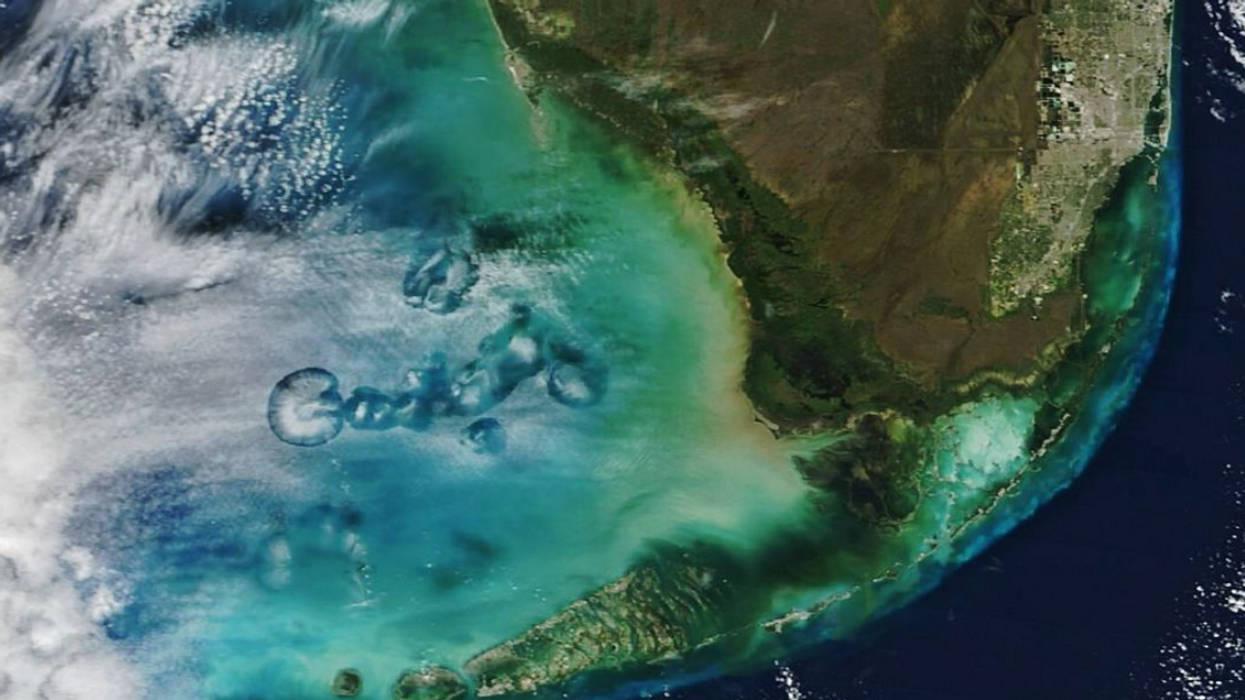Harriet Brewis
Mar 05, 2024

The strange formations were pictured just off the Florida coast
(Michala Garrison/NASA Earth Observatory)
NASA has shared photos of what looks disconcertingly like a cluster of giant jellyfish in the sky.
The space agency’s Terra satellite was flying over the Gulf of Mexico earlier this year when one of its instruments captured an image of the strange-looking bubbles.
Some viewers have suggested these could be the signature of UFOs (or UAP)while others have likened them to holes in the atmosphere.
In fact, they are a phenomenon called cavum clouds, also known as fallstreak holes or hole-punch clouds.
When cavum clouds were first observed in the 1940s, experts couldn’t work out what caused them.
This, inevitably, prompted a number of theories, including that they were formed by flying saucers.
It took another 70 years for scientists to finally figure out that the explanation was a lot less sci-fi worthy: the clouds are actually caused by airplanes.

The formations are created when planes pass through banks of altocumulus clouds – mid-level patches of clouds, called cloudlets, which most commonly take the shape of rounded clumps, as the Met Office explains.
As air moves around the plane, a process called adiabatic expansion can make water droplets in the cloudlets freeze into ice crystals.
These crystals eventually grow heavy and fall out of the sky, leaving a hole in the cloud layer, NASA noted in an Instagram post.
In the image taken thanks to NASA’s Terra satellite, the falling ice crystals appear in the centre of the holes as wispy white trails of precipitation that never reach the ground – these features are called virga.
The photo, which was taken on January 30 of this year, has been met with fascination and delight on social media, and it’s not hard to see why.
The picture shows the green land of southern Florida and the curve of the Florida Keys lined by the turquoise blue of the ocean. This is then framed by white flecks and streaks of cloud, with those bubbling fallstreak holes at the very heart of the action.
It is a stunning scene and a reminder of the fragile beauty of the world we all need to protect.
Sign up for our free Indy100 weekly newsletter
Have your say in our news democracy. Click the upvote icon at the top of the page to help raise this article through the indy100 rankings
Top 100
The Conversation (0)













